Head of Department:
Ph.D. Engineer Iwona Kowalska
tel. (+48) 81 4786 883
e-mail: Iwona.Kowalska@iung.pulawy.pl
Office: biochem@iung.pulawy.pl
tel. (+48) 81 4786 880
Department is located in the INCBR Center,
address: Krancowa 8 Street, 24-100 Pulawy
The research profile of the Department
- qualitative and quantitative analyses of organic compounds present in plants and functional foods;
- studies on the chemical structure, biological activity, occurrence and possible practical use of biologically active plant-specific substances;
- development and improvement of methods for the determination of the content of selected plant constituents;
- research into the quality of biomass with a view to its suitability for biogas production;
- elemental analyses of plant material for the content of biogenic elements;
- determination of the influence of environmental, agrotechnical and genetic factors on the qualitative and quantitative composition of substances affecting the nutritional value of crop plants;
- study of vegetable post-extraction waste;
- studies of the influence of biotic and abiotic factors on the chemical composition of plants.
Offer
- Determination of exact molecular weight and chemical formulas, including isotopic pattern, for pure chemical compounds and components of mixtures separated either by UHPLC or GC, using high-resolution mass spectrometry with an accuracy below 1 ppm. Accurate mass measurements of fragmentation ions are also available.
- Determination of structures of natural substances – NMR.
- Preparation of plant extracts, and purification and isolation of standards (full technical background) for nutritional research and biological activity research. Extraction of essential oils.
- Determination in plants, plant-derived products, raw materials, and pharmaceutical products:
- steroid and triterpene saponins and steroidal glycoalkaloids –UHPLC-MS,
- phenolic compounds (phenolic acids, flavonoids, isoflavonoids, catechins, anthocyanins) – HPLC-DAD, UHPLC-MS,
- benzoxazinoids – UHPLC-MS,
- cyanogenic glycosides – UHPLC-MS,
- water-soluble vitamins (vitamin C and from B group) – UHPLC-MS,
- mono – and oligosaccharides – UHPLC-MS,
- glucosinolates – UHPLC-MS,
- aminoacids – UHPLC-MS (in fertilizers, growth promoters and in the plants).
- Determination of the content of crude fiber, as well as its fractions: neutral detergent fraction (NDF), acid detergent fraction (ADF) and acid detergent lignin (ADL) in biological material. Determination of the content of cellulose, hemicellulose and lignin.
- Analysis of the content of biogenic elements C, H, N, S and O in plant samples, soil, biomass, fuels, sewage, etc..
- Determination of the total protein content, calorific value and theoretical biogas yield for the material under investigation.
- Research on the methane fermentation process in stationary and continuous mode, using different substrates, and assessment of their suitability for biogas production by determining the biogas and methane yields.
- Research on the influence of inhibitors of stimulants of the methane fermentation process.
- Testing the composition of biogas in terms of methane, carbon dioxide and oxygen content (in the range of 0 to 100% with an accuracy of 0.5%), hydrogen sulphide (in the range of 0 – 10000 ppm) and ammonia (in the range of 0-1000 ppm).
Equipment
NMR Laboratory – Nuclear Magnetic Resonance Spectroscopy
The laboratory specializes in phytochemical analysis – organic compounds present in plants – specialized (secondary) metabolites, including phenolic acids, flavonoids and saponins. We have a set of experiments that effectively allow us to study the type of aglycon and the connection between sugars. We offer both qualitative and quantitative analyses using the ERETIC2 method, but also professional assistance in interpreting results.
AVANCE III HD 500 MHz Bruker spectrometer
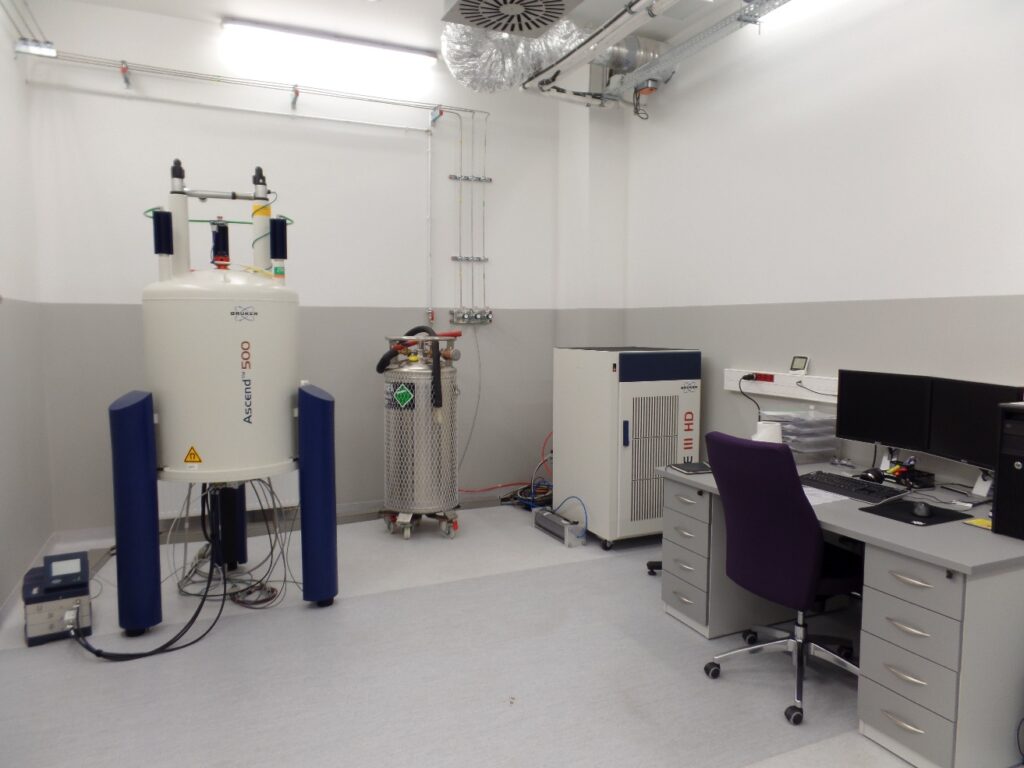
Department is equipped with Bruker’s spectrometer, with probe-heads for measurements in liquid samples (20-100°C):
- PA BBI 500S1 H-BB-D-05 Z – broadband (31P-109Ag, including 13C, 15N), gradient (z-axis), inverse, particularly suited for 1H NMR measurements and two-dimensional correlation spectra, e.g. COSY, NOESY, HSQC, HMBC, etc.
- PA DUL 500S1 C-H-D-05 Z – dual (1H/13C), gradient (z-axis), particularly suited for 13C NMR measurements.
Typical applications for this instrument are:
- one-dimensional – 1H & 1H with solvent suppression, 13C (InverseGated/DEPT/DEPTq and UDEFT), selective COSY, TOCSY (including CSSF-TOCSY), NOESY (incl. CSSF-NOESY), ROESY & step-NOESY, T1-measurements;
- two-dimensional – dqf-COSY, 2D-TOCSY (also with solvent suppression), 2D-NOESY (also with solv. suppr.), 2D-ROESY (also with solv. suppr.), HSQC (also with solv. suppr.), HSQC-TOCSY, HSQC-HECADE (JCH-measurements), H2BC, HMBC, CPMG-HSQMBC & J-HMBC (JCH-measurements), 1,1-ADEQUATE (only for concentrated samples), selective 2D-HSQC and selective 2D-HMBC.
MS Laboratory – mass spectrometry
Research interests of the Department are focused on analysis of organic compounds synthesized by plants, especially plant specific (secondary) metabolites. The identification, as well as the determination of their quantitative (also trace) content, in the tested material is performed of mass spectra in MS and MSn (fragmentation spectra) modes measurements.
Bruker Impact II HD Q-TOF mass spectrometer with auxiliary equipment

Spectrometer aids the determination of the elemental composition of the chemical compounds under investigation by precisely measuring the mass-to-charge ratio of their ions. The hybrid design based on a quadrupole analyzer combined with a time-of-flight analyzer also allows obtaining fragmentation spectra for compounds identification. The spectrometer is equipped with interchangeable ion sources to ionize a wide variety of chemicals by electrospray (ESI), atmospheric-pressure chemical ionization (APCI, GC-APCI), or atmospheric-pressure photoionization (APPI).
Comprehensive qualitative and quantitative analyses of complex mixtures, such as plant extracts, are possible due to to a combination of the spectrometer with the supporting equipment: ultra-efficient liquid chromatography systems (UHPLC, Dionex UltiMate 3000RS), gas chromatography (GC, Bruker Scion 456) and capillary electrophoresis (CE, Agilent 7100).
Typical applications for this instrument are:
- analyses of targeted and non-targeted metabolomics in plant material,
- analysis of lipidomics (mainly in seed samples),
- quantitative analyses of compounds without chromophores with the use of a universal CAD type detector,
- FAME analyses in various materials,
- determining the molecular weight and elemental composition of isolated plant metabolites.
ACQUITY Premier UPLCTM ultra-high performance liquid chromatography system coupled to a triple quadrupole mass spectrometer (Xevo TQ-XS) made by Waters
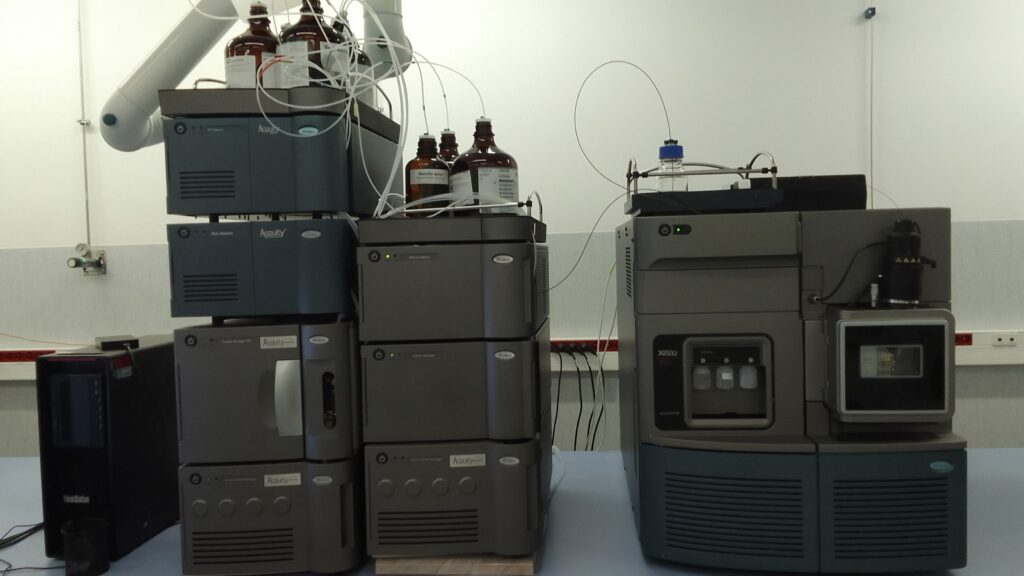
The liquid chromatograph includes two detectors: a photodiode array (PDA), operating in the 190-800 nm wavelength range, and an evaporative light scattering detector (ELSD), with a data collection frequency of 80 Hz. The low-resolution mass spectrometer allows scanning of masses up to 2000 Da and is equipped with two ion sources: electrospray ionisation (ESI) and atmospheric pressure chemical ionisation (APCI). The UPLC-MS system allows fast (approximately 10 min) reversed-phase (RP) or hydrophilic interaction (HILIC) chromatographic separations.
Typical applications of this instrument include:
- quantitative analyses of the content of specialized metabolites, including polyphenols, saponins, terpenoids, alkaloids, glycosides and others, in plant material (plant extracts, feed and food products),
- determination of free amino acids, monosaccharides and vitamins,
- other types of qualitative and quantitative UHPLC-MS analyses.
High performance liquid chromatography (HPLC) system
The Department is equipped with liquid chromatography system types:
- HPLC – PDA – FLD by Dionex coupled with a detector photodiode in the range 180 – 560 nm and a fluorescence detector (FDA) with a flow range of 0.5 to 8.0 ml/min.

- Semi-preparative HPLC – ELSD by Gilson coupled with a evaporative light scattering detector (ELSD) with a flow range from 1 to 12 ml/min.
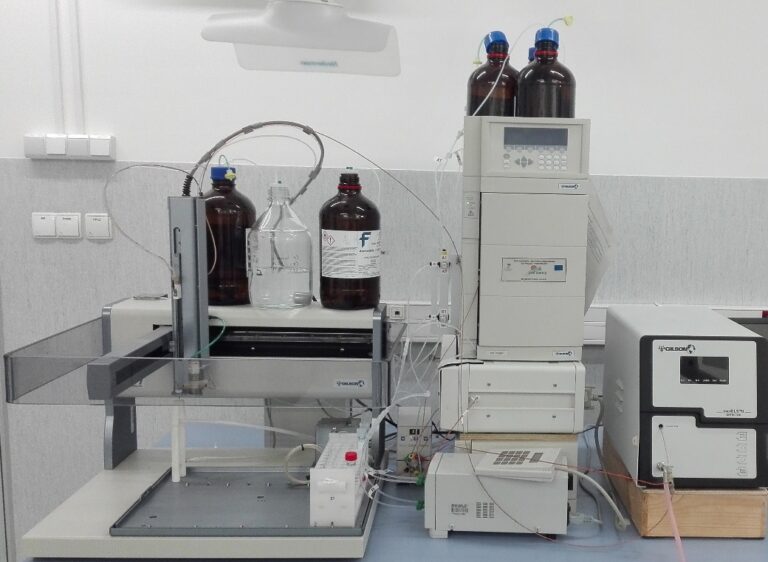
Typical applications for these instruments are:
- isolation of secondary metabolites (high purity) for structure determination by NMR and biological activity testing,
- isolation of reference substances for the standardization of biological materials, food and feed.
Biomass laboratory
Automatic fiber analyzer ANKOM DELTA

The automatic fiber analyzer model DELTA by ANKOM Technology is a device working in the „filter bag” technology. The analysis is performed according to the van Soest method. The device allows to work with any biological samples, plant material, foods etc. It has the ability to analyze 24 samples simultaneously. Dosing of reagents, temperature control, control of the tightness of the device, mixing of samples, pumping out of the post-extraction waste are fully automatic. The device is characterized by an intuitive stress panel, allowing easy switching between methods.
Applications:
- determination of the content of crude fiber, as well as its fractions: neutral detergent fraction (NDF), acid detergent fraction (ADF) and acid detergent lignin (ADL) in biological material,
- determination of the content of cellulose, hemicellulose and lignin.
Elemental analyzer CHNS/O

The FlashSmart device from Thermo Scientific is the most modern, automatic elemental analyzer on the market, providing the most repeatable and sensitive measurements of various types of samples – coals, biomass, solid fuels, liquid fuels, organic compounds, pharmaceuticals, etc. The analyzer uses the method of dynamic high-temperature combustion of samples in a furnace with electronically controlled temperature, separation of the gases produced on a column and their detection on a high-sensitivity thermal conductivity detector (TCD). The device is equipped with two separate reaction furnaces with electronic temperature control, compatible with combustion-reduction reactors for the analysis of C, H, N, S and a pyrolysis reactor for the analysis of O, working independently. The device is fully automatic, allowing work without the need for rearming, dismantling / assembling any elements. Switching between measurement channels is done from the control software.
Applications:
- analysis of the content of biogenic elements C, H, N, S and O in plant samples, soil, biomass, fuels, sewage, etc.,
- determination of the total protein content, calorific value and theoretical biogas yield for the material under investigation.
Biogas Test Plant (BTPs) – set of three fermentors
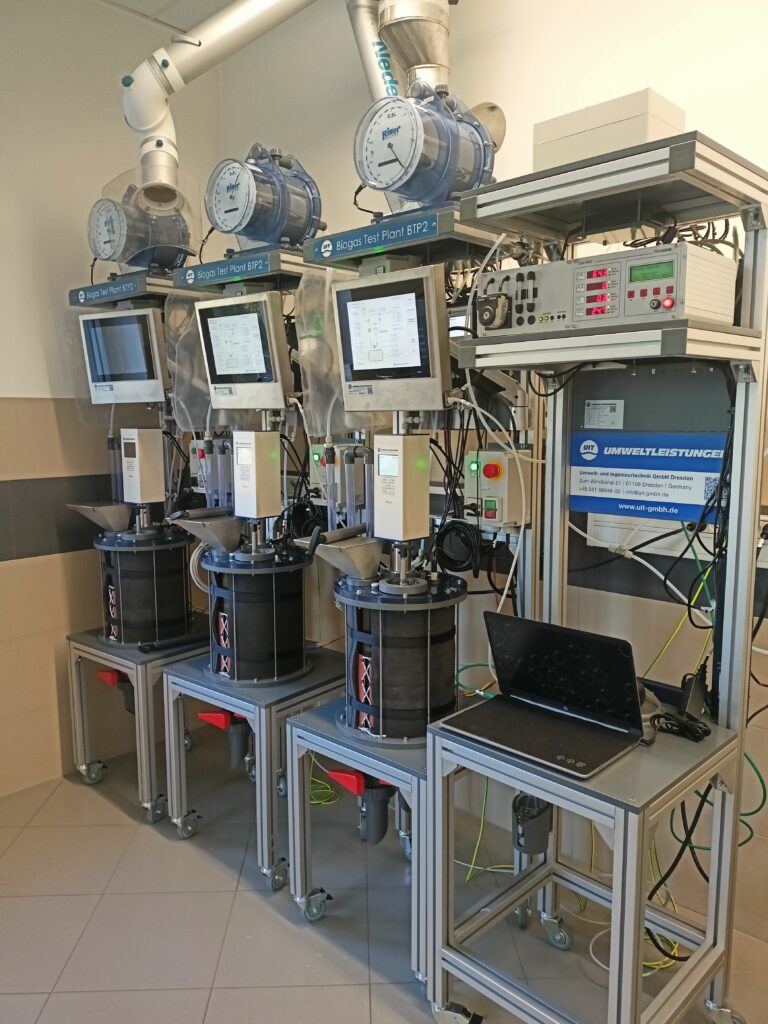
Biogas test plant (BTPs) manufactured by Umweltleistungen (UIT) is a set of three 20 L fermenters with equipment for controlling the most important parameters of the methane fermentation process, such as temperature, pH, mixing speed and cycle, amount and composition of biogas – methane, carbon dioxide, hydrogen sulphide and oxygen content. The device allows the fermentation process to be carried out in stationary, as well as continuous mode. It allows for adding and taking samples without disturbing the ongoing process. The device records the measured values of the above mentioned parameters, which can then be viewed on the monitor screen, displayed in the form of graphs or downloaded to an external storage.
Applications of the fermentors set:
- research on the methane fermentation process in stationary and continuous mode, using different substrates, and assessment of their suitability for biogas production by determining the biogas and methane yields,
- research on the influence of inhibitors of stimulants of the methane fermentation process,
- production of post-fermentation sludge from specifically selected substrates for research on its use as fertilizer.
Portable biogas analyzer GA 5000
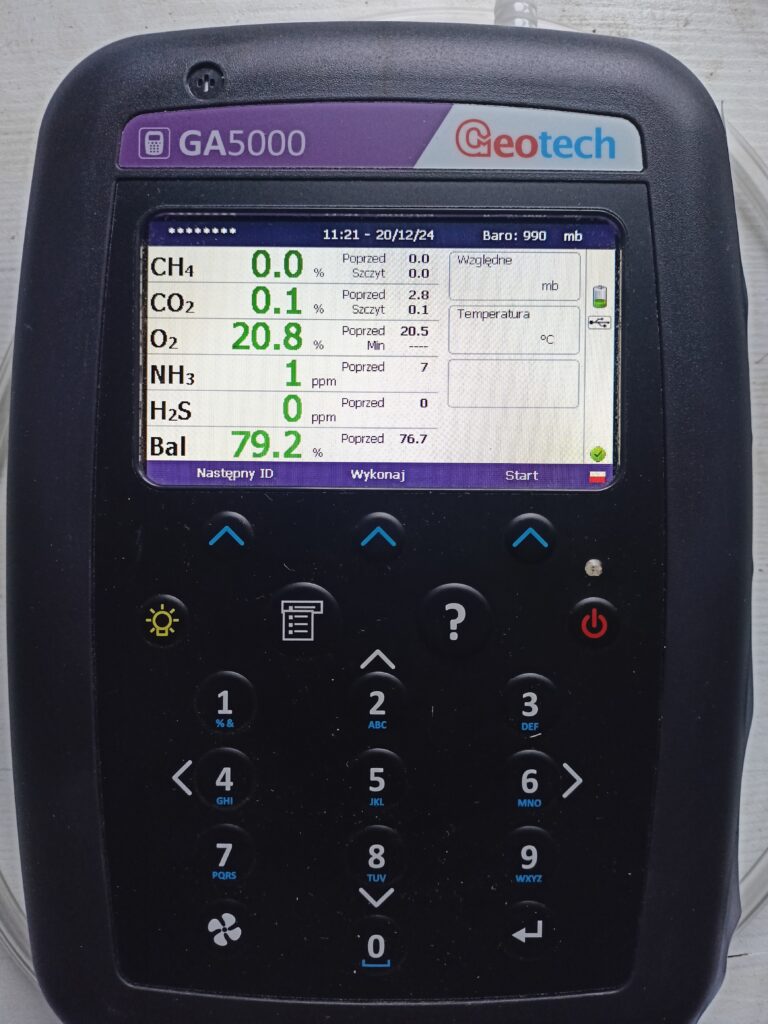
The GeoTech GA 5000 is portable biogas analyzer with a large colour display, equipped with infrared sensors for methane and carbon dioxide and electrochemical measuring cells for oxygen, hydrogen sulphide and ammonia. The device is ATEX II certified and has a UKAS calibration certificate (ISO 17025). The analyzer can be used both in the laboratory and in the field.
Applications of the analyzer:
- testing the composition of biogas in terms of methane, carbon dioxide and oxygen content (in the range of 0 to 100% with an accuracy of 0.5%), hydrogen sulphide (in the range of 0 – 10000 ppm) and ammonia (in the range of 0-1000 ppm).
Sample preparation laboratory
The Department equipment enables sample preparation with all caution at each step of the process for the sake of chemically unstable substances.
CHRIST’s Gamma 2-16 LSC freeze dryer
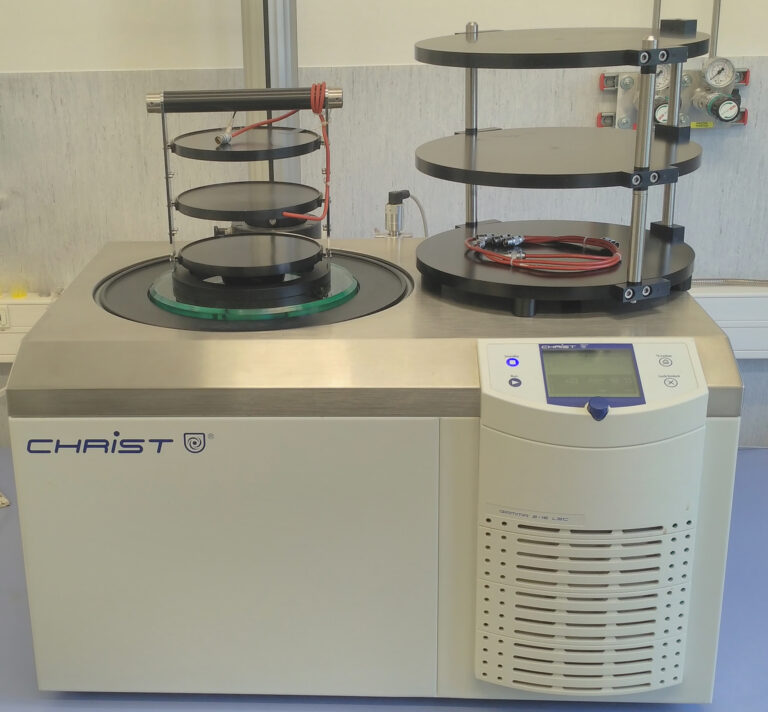
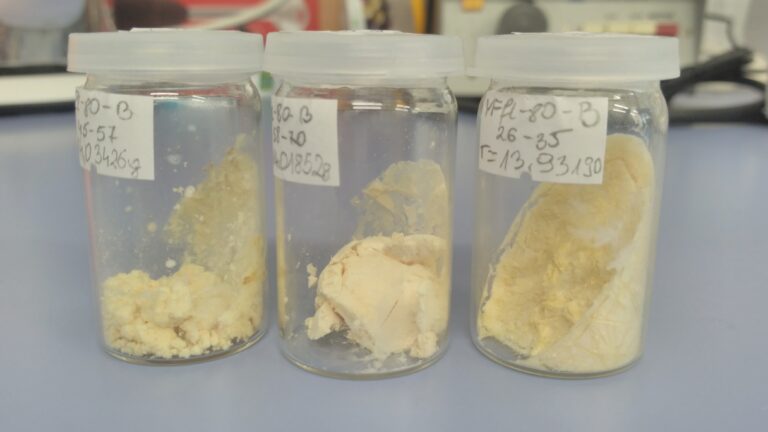
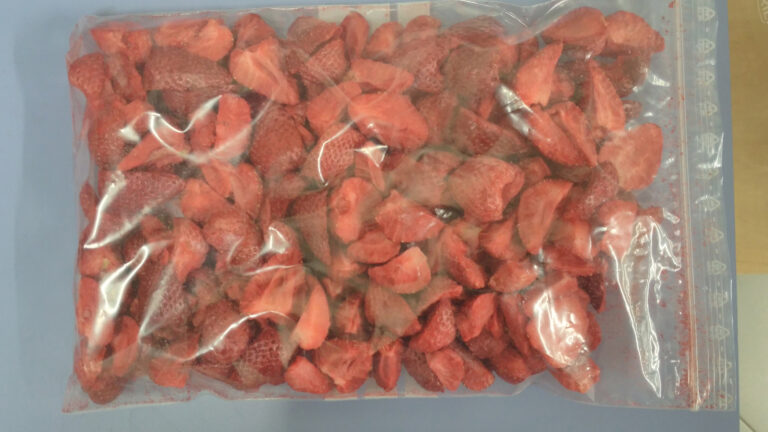
Freeze dryer enables freeze drying of samples in a wide range of temperatures (-55°C) – (+50 °C) and pressures (<0.01 mbar). The device allows sublimation removal of water (and some organic solvents, e.g. t-BuOH, DMSO) at reduced temperature and under reduced pressure, from frozen solutions and biological materials, e.g. extracts, suspensions, whole plants and fruit / vegetables. Due to the use of reduced temperature, it is possible to dry thermolabile samples. Freeze drying is carried out on 5 shelves with a diameter of 20 cm and 3 shelves with a diameter of 37 cm.
Accelerated Solvent Extraction System Dionex ASE 200
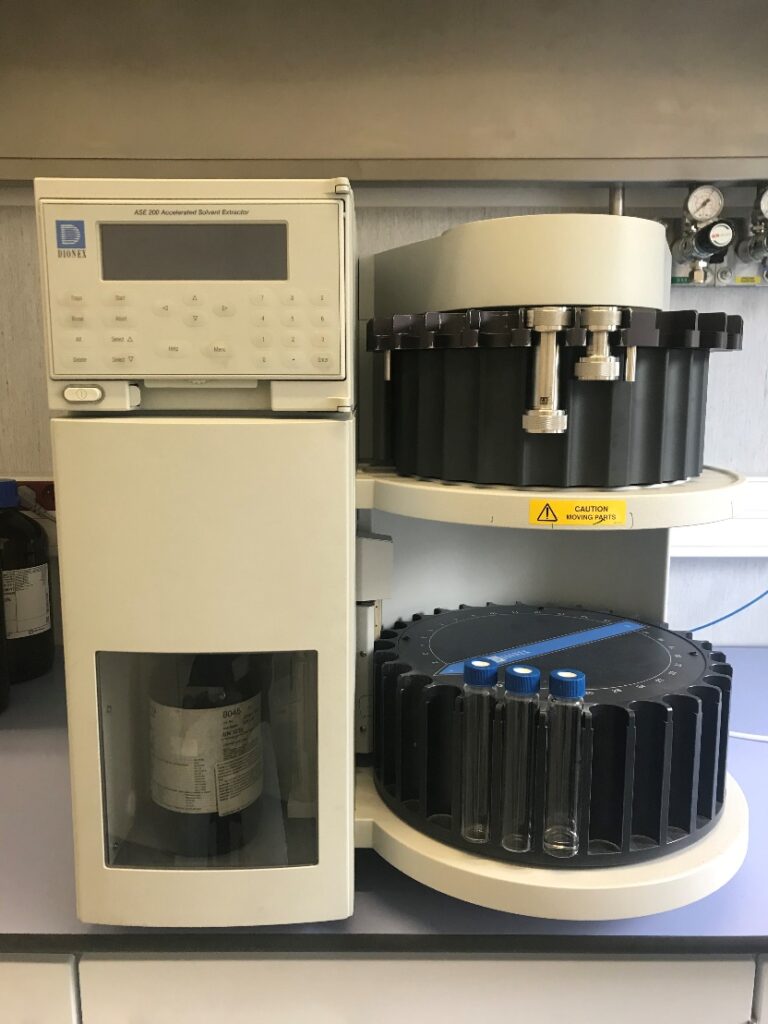
Accelerated Solvent Extraction System Dionex ASE 200 allows to significantly reduce the extraction time and solvent consumption by up to 90%. The autosampler with a 24-site rotor and extraction cells volumes available in 1 – 33 mL, enables a series of analyses with a wide range of samples weight. The system can work with aqueous and organic solvents. Temperature and pressure control accelerates the kinetics of the extraction process. The solvent boiling prevention makes extraction safer, faster and more efficient than traditional techniques.
Microwave extraction apparatus for volatile natural products (Ethos X) with equipment

It’s a solvent-free extraction apparatus using the microwave hydrodiffusion technique. The internal water within the sample absorbs microwaves and heats up, distending the sample’s cells and rupturing the glands and oleiferous receptacles. Compared to the classic method of distillation with steam, the advantage of microwave extraction is the short process time and greater extraction efficiency. This apparatus, in the configuration with a gravity receiver allows obtaining less volatile organic compounds.
Heidolph semi-technical rotary evaporator (up to 20 liters)
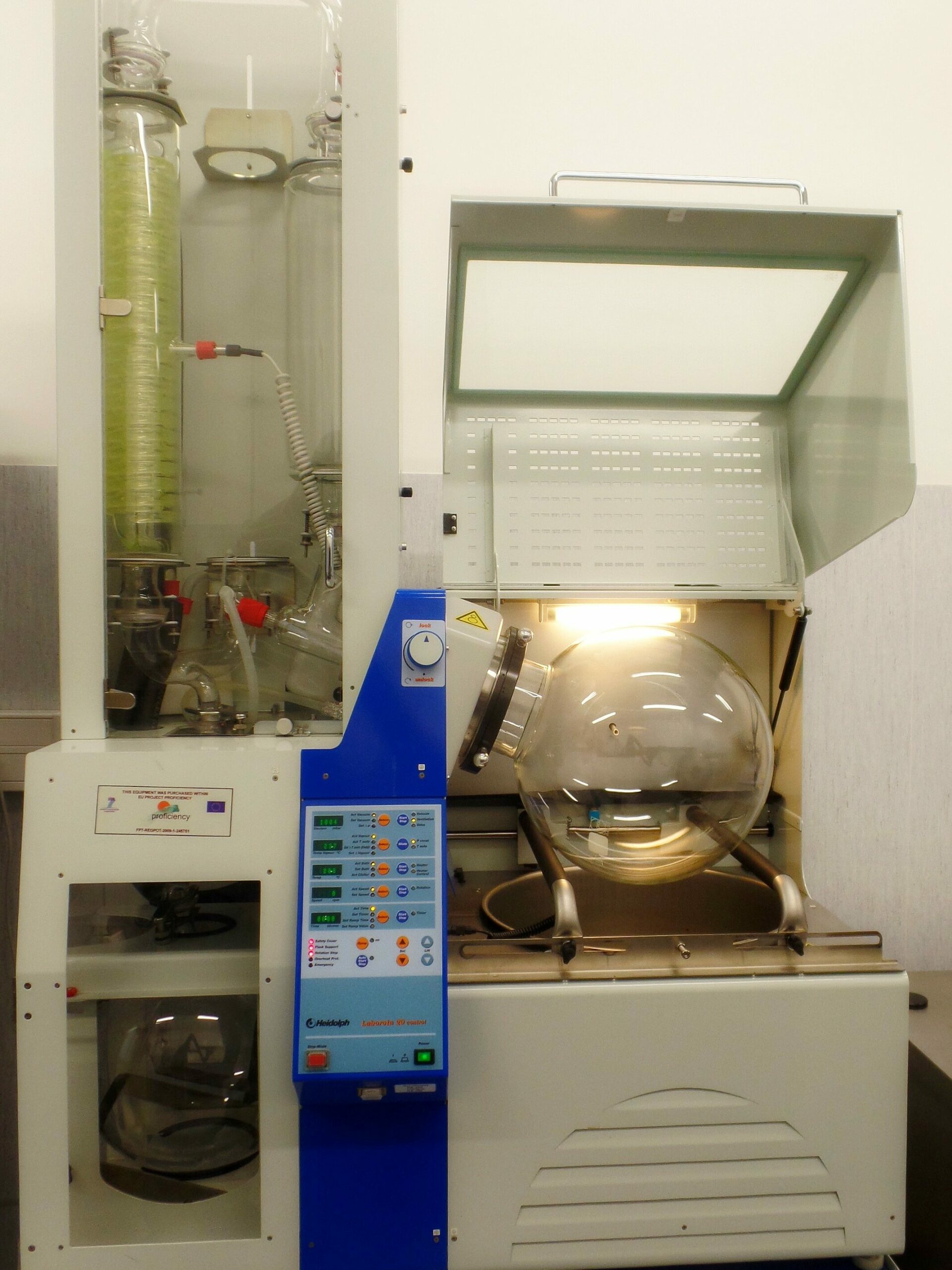

Rotary evaporator which enables the evaporation of solvents with a wide range of boiling points thanks to the chemically resistant KNF SBC LABOBASE 860 vacuum pump (60 L/min, 2 mbar. final pressure) and an efficient cooler powered by a Huber Unichiller UC025 circulator (2.5 kW at 15 °C).The device allows a quick evaporation of both organic solvents and water from plant extracts and other materials, while maintaining a low temperature of the solution, which is very important when processing temperature-sensitive substances. Additionally, it is possible to evaporate solutions that tend to spatter and foam thanks to the additional expansion vessel.

